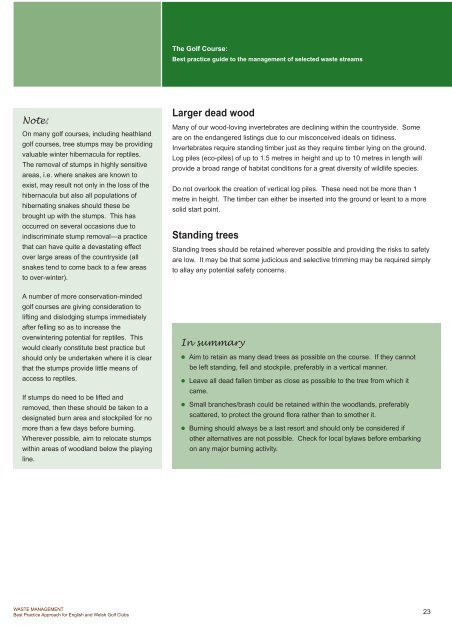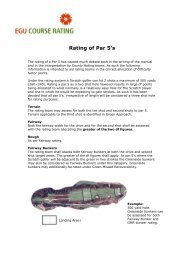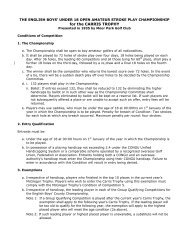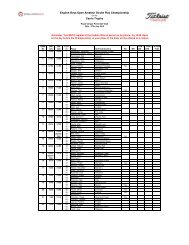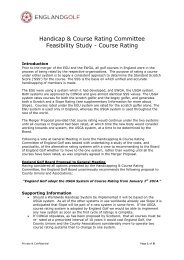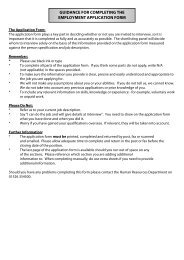Waste management - England Golf
Waste management - England Golf
Waste management - England Golf
Create successful ePaper yourself
Turn your PDF publications into a flip-book with our unique Google optimized e-Paper software.
The <strong>Golf</strong> Course:<br />
Best practice guide to the <strong>management</strong> of selected waste streams<br />
Note:<br />
On many golf courses, including heathland<br />
golf courses, tree stumps may be providing<br />
valuable winter hibernacula for reptiles.<br />
The removal of stumps in highly sensitive<br />
areas, i.e. where snakes are known to<br />
exist, may result not only in the loss of the<br />
hibernacula but also all populations of<br />
hibernating snakes should these be<br />
brought up with the stumps. This has<br />
occurred on several occasions due to<br />
indiscriminate stump removal—a practice<br />
that can have quite a devastating effect<br />
over large areas of the countryside (all<br />
snakes tend to come back to a few areas<br />
to over-winter).<br />
Larger dead wood<br />
Many of our wood-loving invertebrates are declining within the countryside. Some<br />
are on the endangered listings due to our misconceived ideals on tidiness.<br />
Invertebrates require standing timber just as they require timber lying on the ground.<br />
Log piles (eco-piles) of up to 1.5 metres in height and up to 10 metres in length will<br />
provide a broad range of habitat conditions for a great diversity of wildlife species.<br />
Do not overlook the creation of vertical log piles. These need not be more than 1<br />
metre in height. The timber can either be inserted into the ground or leant to a more<br />
solid start point.<br />
Standing trees<br />
Standing trees should be retained wherever possible and providing the risks to safety<br />
are low. It may be that some judicious and selective trimming may be required simply<br />
to allay any potential safety concerns.<br />
A number of more conservation-minded<br />
golf courses are giving consideration to<br />
lifting and dislodging stumps immediately<br />
after felling so as to increase the<br />
overwintering potential for reptiles. This<br />
would clearly constitute best practice but<br />
should only be undertaken where it is clear<br />
that the stumps provide little means of<br />
access to reptiles.<br />
If stumps do need to be lifted and<br />
removed, then these should be taken to a<br />
designated burn area and stockpiled for no<br />
more than a few days before burning.<br />
Wherever possible, aim to relocate stumps<br />
within areas of woodland below the playing<br />
line.<br />
In summary<br />
Aim to retain as many dead trees as possible on the course. If they cannot<br />
be left standing, fell and stockpile, preferably in a vertical manner.<br />
Leave all dead fallen timber as close as possible to the tree from which it<br />
came.<br />
Small branches/brash could be retained within the woodlands, preferably<br />
scattered, to protect the ground flora rather than to smother it.<br />
Burning should always be a last resort and should only be considered if<br />
other alternatives are not possible. Check for local bylaws before embarking<br />
on any major burning activity.<br />
WASTE MANAGEMENT<br />
Best Practice Approach for English and Welsh <strong>Golf</strong> Clubs<br />
23


